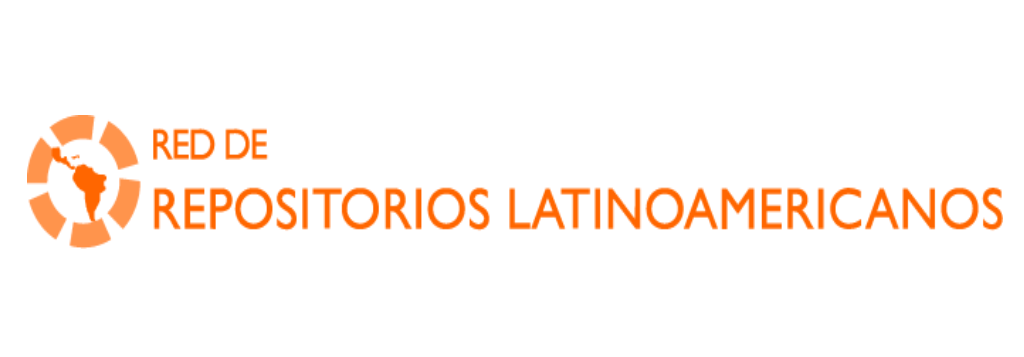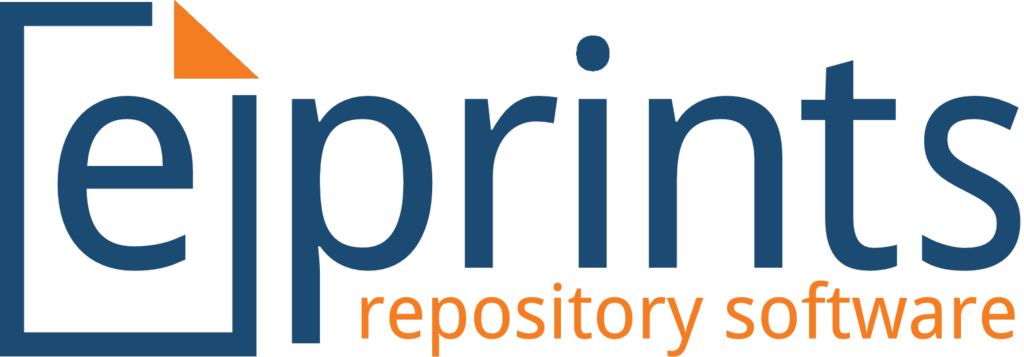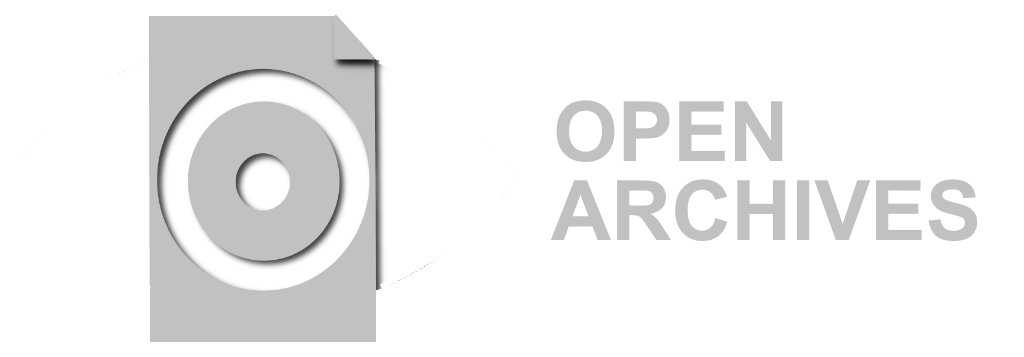| dc.contributor.author | Sanchez Mora, Ruth Melida | |
| dc.contributor.author | Gómez Jiménez, Martha | |
| dc.contributor.author | Gualteros Bustos, Andrea Viviana | |
| dc.date.accessioned | 2022-05-23T20:35:18Z | |
| dc.date.available | 2022-05-23T20:35:18Z | |
| dc.date.issued | 2021 | |
| dc.identifier.isbn | 9789585198029 | spa |
| dc.identifier.uri | https://repositorio.universidadmayor.edu.co/handle/unicolmayor/5562 | |
| dc.description | Incluye índice de abreviaturas. -- Incluye referencias bibliográficas | spa |
| dc.description.abstract | El impacto de los cultivos de células madres (CMs) se ha reflejado en múltiples aplicaciones a través del tiempo, desde el análisis, la caracterización de vías, moléculas y mecanismos de señalización, implicados en patologías humanas, hasta el descubrimiento de nuevos fármacos y blancos terapéuticos utilizados como solución para estas. Los avances en tecnologías de punta han permitido el desarrollo de nuevos equipos, materias primas y nuevas técnicas moleculares que actualmente facilitan la aplicación de cultivos de CMs en terapias celulares para el tratamiento de enfermedades crónicas y la regeneración de tejidos. En las nuevas técnicas y metodologías de cultivos celulares se busca lograr reproducibilidad, exactitud y precisión, con el fin de diseñar cultivos que imiten las condiciones en que las CMs se encuentran in vivo, que permita lograr una mayor certeza e impacto en su aplicabilidad, así como en el diseño de materiales ambientalmente sostenibles y de fácil manipulación. El avance en los cultivos de CMs se ve reflejado en la creación de bancos públicos de aislamiento, identificación y crio preservación de CMs de sangre de cordón umbilical. Colombia se constituye en el cuarto país después de México, Brasil y Argentina en el que se proyecta actualmente el tratamiento de enfermedades huérfanas, crónicas y metabólicas en poblaciones vulnerables (trasplantes alogénicos) o en los mismos donantes de CMs (trasplantes autólogos). El programa Cordial, desarrollado por el Instituto Distrital de Ciencia, Biotecnología e Innovación en Salud (IDCBIS), desde el año 2011fomenta la donación de sangre de cordón umbilical por parte de maternas en diferentes regiones de Colombia, con el propósito de obtener la mayor diversidad genética y así disminuir los costos de importación de CMs, lo cual mejore la disponibilidad y la oportunidad en los tratamientos, además de implementar una base de datos que facilita la búsqueda de CMs teniendo como criterio principal la compatibilidad. De esta manera, los cultivos de CMs se convierten en una herramienta útil para el avance en diferentes áreas del conocimiento. | spa |
| dc.description.tableofcontents | Lista de figuras
Lista de tablas
Glosario
Índice de abreviaturas
Prólogo
1. Cultivo de células madre: aislamiento
e identificación
1.1 Clasificación de las células madre
1.2. Aspectos preliminares del cultivo de células madre
1.2.1 Microambiente, microentorno o nicho
1.2.2 Matriz extracelular
1.3 Aislamiento de células madre para cultivo
1.3.1 Método de gradiente de densidad de Ficoll
1.3.2 Método de dispositivo de filtro de médula ósea
1.3.3 Método de digestión (colagenasa)
1.3.4 Método de filtración por membrana
1.4 Identificación de células madre
1.4.1 CD90 (cluster of differentiation 90)
1.4.2 CD73 o 5’-nucleotidasa
1.4.3 CD105 o endoglina
1.4.4 STRO-1
1.4.5 CD106 (cluster of differentiation 106)
2. Autorrenovación y mantenimiento de células madre
2.1 Autorrenovación de las células madre
2.2 Mantenimiento de cultivos de células madre
2.2.1 Cultivo de mantenimiento de células madre mesenquimales
provenientes de tejido adiposo
2.2.2 Cultivo de mantenimiento de células madre mesenquimales
provenientes de explantes dentales
2.2.3 Cultivo de mantenimiento de células madre mesenquimales
provenientes de cordón umbilical
2.3 Diferenciación dirigida de células madre
2.3.1 Condrogénesis
2.3.2 Osteogénesis
2.3.3 Adipogénesis
2.4 Métodos de criopreservación de células madre
2.4.1 Procedimiento convencional de congelación lenta
2.4.2 Procedimiento de enfriamiento ultrarrápido
2.5. Control de calidad y buenas prácticas de fabricación
3. Sistemas de cultivo de células madre
3.1 Cultivos en monocapa
3.2 Cultivos 2D
3.3 Cultivos 3D
3.4 Organoides
3.5 Cultivos en biorreactor
4. Aplicaciones de los cultivos de células madre
4.1 Las células madre pluripotentes inducidas como modelo
para enfermedades
4.2 Aplicaciones de los modelos organoides
4.3 Las células madre mesenquimales como modelo
para enfermedades
4.3.1 Las células madre mesenquimales en enfermedades
autoinmunes
4.3.2 Células madre mesenquimales en tratamiento de cáncer
4.3.3 Células madre mesenquimales en enfermedades
neurodegenerativas
Conclusión
Referencias | spa |
| dc.format.mimetype | application/pdf | spa |
| dc.language.iso | spa | spa |
| dc.rights.uri | https://creativecommons.org/licenses/by-nc-nd/4.0/ | spa |
| dc.title | Impacto del cultivo de células madre y sus aplicaciones | spa |
| dc.type | Libro | spa |
| dcterms.extent | 96 páginas. | |
| dc.coverage.country | Colombia | |
| dc.description.edition | 1a. ed. | |
| dc.publisher.editor | Universidad Colegio Mayor de Cundinamarca | |
| dc.publisher.place | Bogotá, Colombia, 2021 | spa |
| dc.relation.references | 1. Saito MT, Silverio KG, Casati MZ, Sallum EA, Nociti FH, Jr. Tooth-derived
stem cells: Update and perspectives. World journal of stem cells.
2015;7(2):399-407. | spa |
| dc.relation.references | 2. Kolf CM, Cho E, Tuan RS. Mesenchymal stromal cells. Biology of adult mesenchymal
stem cells: regulation of niche, self-renewal and differentiation. Arthritis
research & therapy. 2007;9(1):204. | spa |
| dc.relation.references | 3. Bao M, Xie J, Huck WTS. Recent Advances in Engineering the Stem Cell Microniche
in 3D. Advanced science. 2018;5(8):1800448. | spa |
| dc.relation.references | 4. Ouryazdanpanah N, Dabiri S, Derakhshani A, Vahidi R, Farsinejad A. Peripheral
Blood-Derived Mesenchymal Stem Cells: Growth Factor-Free Isolation,
Molecular Characterization and Differentiation. Iranian journal of pathology.
2018;13(4):461-6. | spa |
| dc.relation.references | 5. Rye PD, Hoifodt HK, Overli GE, Fodstad O. Immunobead filtration: a novel
approach for the isolation and propagation of tumor cells. The American
journal of pathology. 1997;150(1):99-106. | spa |
| dc.relation.references | 6. Hibino N, Nalbandian A, Devine L, Martinez RS, McGillicuddy E, Yi T, et al.
Comparison of human bone marrow mononuclear cell isolation methods
for creating tissue-engineered vascular grafts: novel filter system versus traditional
density centrifugation method. Tissue engineering Part C, Methods.
2011;17(10):993-8. | spa |
| dc.relation.references | 7. Pillai SG, Zhu P, Siddappa CM, Adams DL, Li S, Makarova OV, et al. Enrichment
and Molecular Analysis of Breast Cancer Disseminated Tumor Cells from
Bone Marrow Using Microfiltration. PloS one. 2017;12(1):e0170761. | spa |
| dc.relation.references | 8.Raposio E, Simonacci F, Perrotta RE. Adipose-derived stem cells: Comparison
between two methods of isolation for clinical applications. Annals of medicine
and surgery. 2017;20:87-91. | spa |
| dc.relation.references | 9. Ishii K, Suzuki N, Mabuchi Y, Sekiya I, Akazawa C. Technical advantage of recombinant
collagenase for isolation of muscle stem cells. Regenerative therapy.
2017;7:1-7. | spa |
| dc.relation.references | 10. De Francesco F, Mannucci S, Conti G, Dai Pre E, Sbarbati A, Riccio M. A
Non-Enzymatic Method to Obtain a Fat Tissue Derivative Highly Enriched in
Adipose Stem Cells (ASCs) from Human Lipoaspirates: Preliminary Results.
International journal of molecular sciences. 2018;19(7). | spa |
| dc.relation.references | 11. Qu C, Yan M, Yang S, Wang L, Yin Q, Liu Y, et al. Haploid embryonic stem cells
can be enriched and maintained by simple filtration. The Journal of biological
chemistry. 2018;293(14):5230-5. | spa |
| dc.relation.references | 12. Lin HR, Heish CW, Liu CH, Muduli S, Li HF, Higuchi A, et al. Purification and
differentiation of human adipose-derived stem cells by membrane filtration
and membrane migration methods. Scientific reports. 2017;7:40069. | spa |
| dc.relation.references | 13. Schlinker AC, Radwanski K, Wegener C, Min K, Miller WM. Separation of
in-vitro-derived megakaryocytes and platelets using spinning-membrane filtration.
Biotechnology and bioengineering. 2015;112(4):788-800. | spa |
| dc.relation.references | 14. Klymiuk MC, Balz N, Elashry MI, Heimann M, Wenisch S, Arnhold S. Exosomes
isolation and identification from equine mesenchymal stem cells. BMC veterinary
research. 2019;15(1):42. | spa |
| dc.relation.references | 15. Khan FA, Almohazey D, Alomari M, Almofty SA. Isolation, Culture, and Functional
Characterization of Human Embryonic Stem Cells: Current Trends and
Challenges. Stem cells international. 2018;2018:1429351. | spa |
| dc.relation.references | 16. Lin CS, Xin ZC, Dai J, Lue TF. Commonly used mesenchymal stem cell markers
and tracking labels: Limitations and challenges. Histology and histopathology.
2013;28(9):1109-16. | spa |
| dc.relation.references | 17. Morris RJ. Thy-1, a Pathfinder Protein for the Post-genomic Era. Frontiers in
cell and developmental biology. 2018;6:173. | spa |
| dc.relation.references | 18. Bradley JE, Ramirez G, Hagood JS. Roles and regulation of Thy-1, a context-dependent
modulator of cell phenotype. BioFactors. 2009;35(3):258-65. | spa |
| dc.relation.references | 19. Barry F, Boynton R, Murphy M, Haynesworth S, Zaia J. The SH-3 and SH-4 antibodies
recognize distinct epitopes on CD73 from human mesenchymal stem cells.
Biochemical and biophysical research communications. 2001;289(2):519-24. | spa |
| dc.relation.references | 20. Katsuta E, Tanaka S, Mogushi K, Shimada S, Akiyama Y, Aihara A, et al. CD73 as
a therapeutic target for pancreatic neuroendocrine tumor stem cells. International
journal of oncology. 2016;48(2):657-69 | spa |
| dc.relation.references | 21. Kumar V. Adenosine as an endogenous immunoregulator in cancer pathogenesis:
where to go? Purinergic signalling. 2013;9(2):145-65. | spa |
| dc.relation.references | 22. de Leve S, Wirsdorfer F, Jendrossek V. Targeting the Immunomodulatory
CD73/Adenosine System to Improve the Therapeutic Gain of Radiotherapy.
Frontiers in immunology. 2019;10:698. | spa |
| dc.relation.references | 23. Fonsatti E, Maio M. Highlights on endoglin (CD105): from basic findings
towards clinical applications in human cancer. Journal of translational medicine.
2004;2(1):18. | spa |
| dc.relation.references | 24. Metcalfe E, Arik D, Oge T, Etiz D, Yalcin OT, Kabukcuoglu S, et al. CD105 (endoglin)
expression as a prognostic marker of angiogenesis in squamous cell
cervical cancer treated with radical radiotherapy. Journal of cancer research
and therapeutics. 2018;14(6):1373-8. | spa |
| dc.relation.references | 25. Lopez-Novoa JM, Bernabeu C. The physiological role of endoglin in the cardiovascular
system. American journal of physiology Heart and circulatory
physiology. 2010;299(4):H959-74. | spa |
| dc.relation.references | 26. Lv FJ, Tuan RS, Cheung KM, Leung VY. Concise review: the surface markers and
identity of human mesenchymal stem cells. Stem cells. 2014;32(6):1408-19.
Impacto del cultivo de células madre y sus aplicaciones | spa |
| dc.relation.references | 27. Chosa N, Ishisaki A. Two novel mechanisms for maintenance of stemness in
mesenchymal stem cells: SCRG1/BST1 axis and cell-cell adhesion through
N-cadherin. The Japanese dental science review. 2018;54(1):37-44. | spa |
| dc.relation.references | 28. Uder C, Bruckner S, Winkler S, Tautenhahn HM, Christ B. Mammalian MSC
from selected species: Features and applications. Cytometry Part A : the journal
of the International Society for Analytical Cytology. 2018;93(1):32-49. | spa |
| dc.relation.references | 29. Serna-Cuéllar E, Santamaría-Solís L. Protocolo de extracción y procesamiento
de células madre adultas del tejido adiposo abdominal: coordenadas del
cirujano plástico en la investigación traslacional. Cirugía Plástica Ibero-Latinoamericana.
2013;39:s44-s50 | spa |
| dc.relation.references | 30. Brizuela C C, Galleguillos G S, Carrión A F, Cabrera P C, Luz C P, Inostroza S
C. Aislación y Caracterización de Células Madre Mesenquimales Provenientes
de Pulpa y Folículo Dentario Humano. International Journal of Morphology.
2013;31:739-46. | spa |
| dc.relation.references | 31. Arbósa. A, Nicolau. F, Quetglas. M, Ramis. JM, Monjo. M, Muncunill. J, et al. Obtención
de células madre mesenquimales a partir de cordones umbilicales
procedentes de un programa altruista de donación de sangre de cordón.
Inmunología. 2013;32(1):1-40. | spa |
| dc.relation.references | 32. Mizuno M, Katano H, Otabe K, Komori K, Kohno Y, Fujii S, et al. Complete
human serum maintains viability and chondrogenic potential of human synovial
stem cells: suitable conditions for transplantation. Stem cell research &
therapy. 2017;8(1):144. | spa |
| dc.relation.references | 33. Hornberger K, Yu G, McKenna D, Hubel A. Cryopreservation of Hematopoietic
Stem Cells: Emerging Assays, Cryoprotectant Agents, and Technology
to Improve Outcomes. Transfusion medicine and hemotherapy : offizielles
Organ der Deutschen Gesellschaft fur Transfusionsmedizin und Immunhamatologie.
2019;46(3):188-96 | spa |
| dc.relation.references | 34. Irdani T, Mazzanti B, Ballerini L, Saccardi R, Torre R. A non-traditional approach
to cryopreservation by ultra-rapid cooling for human mesenchymal stem
cells. PloS one. 2019;14(7):e0220055. | spa |
| dc.relation.references | 35. Mizukami A, Swiech K. Mesenchymal Stromal Cells: From Discovery to Manufacturing
and Commercialization. Stem cells international. 2018;2018:4083921. | spa |
| dc.relation.references | 36. Centeno EGZ, Cimarosti H, Bithell A. 2D versus 3D human induced pluripotent
stem cell-derived cultures for neurodegenerative disease modelling.
Molecular neurodegeneration. 2018;13(1):27. | spa |
| dc.relation.references | 37. Ho BX, Pek NMQ, Soh BS. Disease Modeling Using 3D Organoids Derived
from Human Induced Pluripotent Stem Cells. International journal of molecular
sciences. 2018;19(4). | spa |
| dc.relation.references | 38. Takahashi K, Yamanaka S. Induction of pluripotent stem cells from mouse embryonic
and adult fibroblast cultures by defined factors. Cell. 2006;126(4):663-76. | spa |
| dc.relation.references | 39. Oh KW, Moon C, Kim HY, Oh SI, Park J, Lee JH, et al. Phase I trial of repeated
intrathecal autologous bone marrow-derived mesenchymal stromal
cells in amyotrophic lateral sclerosis. Stem cells translational medicine.
2015;4(6):590-7. | spa |
| dc.relation.references | 40. Kim HY, Kim H, Oh KW, Oh SI, Koh SH, Baik W, et al. Biological markers of
mesenchymal stromal cells as predictors of response to autologous stem cell
transplantation in patients with amyotrophic lateral sclerosis: an investigator-
initiated trial and in vivo study. Stem cells. 2014;32(10):2724-31. | spa |
| dc.relation.references | 41. Petrou P, Gothelf Y, Argov Z, Gotkine M, Levy YS, Kassis I, et al. Safety and
Clinical Effects of Mesenchymal Stem Cells Secreting Neurotrophic Factor
Transplantation in Patients With Amyotrophic Lateral Sclerosis: Results of
Phase 1/2 and 2a Clinical Trials. JAMA neurology. 2016;73(3):337-44 | spa |
| dc.relation.references | 42. Staff NP, Madigan NN, Morris J, Jentoft M, Sorenson EJ, Butler G, et al. Safety
of intrathecal autologous adipose-derived mesenchymal stromal cells in patients
with ALS. Neurology. 2016;87(21):2230-4. | spa |
| dc.relation.references | 43. Sykova E, Rychmach P, Drahoradova I, Konradova S, Ruzickova K, Vorisek I, et
al. Transplantation of Mesenchymal Stromal Cells in Patients With Amyotrophic
Lateral Sclerosis: Results of Phase I/IIa Clinical Trial. Cell transplantation.
2017;26(4):647-58.Impacto del cultivo de células madre y sus aplicaciones | spa |
| dc.relation.references | 44. Karussis D, Karageorgiou C, Vaknin-Dembinsky A, Gowda-Kurkalli B, Gomori
JM, Kassis I, et al. Safety and immunological effects of mesenchymal stem cell
transplantation in patients with multiple sclerosis and amyotrophic lateral
sclerosis. Archives of neurology. 2010;67(10):1187-94. | spa |
| dc.relation.references | 45. Connick P, Kolappan M, Patani R, Scott MA, Crawley C, He XL, et al. The
mesenchymal stem cells in multiple sclerosis (MSCIMS) trial protocol and
baseline cohort characteristics: an open-label pre-test: post-test study with
blinded outcome assessments. Trials. 2011;12:62. | spa |
| dc.relation.references | 46. Llufriu S, Sepulveda M, Blanco Y, Marin P, Moreno B, Berenguer J, et al. Randomized
placebo-controlled phase II trial of autologous mesenchymal stem
cells in multiple sclerosis. PloS one. 2014;9(12):e113936. | spa |
| dc.relation.references | 47. Ra JC, Shin IS, Kim SH, Kang SK, Kang BC, Lee HY, et al. Safety of intravenous
infusion of human adipose tissue-derived mesenchymal stem cells in animals
and humans. Stem cells and development. 2011;20(8):1297-308. | spa |
| dc.relation.references | 48. Mendonca MV, Larocca TF, de Freitas Souza BS, Villarreal CF, Silva LF, Matos
AC, et al. Safety and neurological assessments after autologous transplantation
of bone marrow mesenchymal stem cells in subjects with chronic spinal
cord injury. Stem cell research & therapy. 2014;5(6):126. | spa |
| dc.relation.references | 49. Oh SK, Choi KH, Yoo JY, Kim DY, Kim SJ, Jeon SR. A Phase III Clinical Trial
Showing Limited Efficacy of Autologous Mesenchymal Stem Cell Therapy for
Spinal Cord Injury. Neurosurgery. 2016;78(3):436-47; discussion 47. | spa |
| dc.relation.references | 50. Jo CH, Lee YG, Shin WH, Kim H, Chai JW, Jeong EC, et al. Intra-articular injection
of mesenchymal stem cells for the treatment of osteoarthritis of the
knee: a proof-of-concept clinical trial. Stem cells. 2014;32(5):1254-66. | spa |
| dc.relation.references | 51. Pers YM, Rackwitz L, Ferreira R, Pullig O, Delfour C, Barry F, et al. Adipose
Mesenchymal Stromal Cell-Based Therapy for Severe Osteoarthritis of
the Knee: A Phase I Dose-Escalation Trial. Stem cells translational medicine.
2016;5(7):847-56. | spa |
| dc.relation.references | 52. Sanchez-Guijo F, Caballero-Velazquez T, Lopez-Villar O, Redondo A, Parody
R, Martinez C, et al. Sequential third-party mesenchymal stromal cell therapy
for refractory acute graft-versus-host disease. Biology of blood and marrow
transplantation : journal of the American Society for Blood and Marrow
Transplantation. 2014;20(10):1580-5. | spa |
| dc.relation.references | 53. Ringden O, Uzunel M, Rasmusson I, Remberger M, Sundberg B, Lonnies H, et
al. Mesenchymal stem cells for treatment of therapy-resistant graft-versushost
disease. Transplantation. 2006;81(10):1390-7. | spa |
| dc.relation.references | 54. Prasad VK, Lucas KG, Kleiner GI, Talano JA, Jacobsohn D, Broadwater G, et
al. Efficacy and safety of ex vivo cultured adult human mesenchymal stem
cells (Prochymal) in pediatric patients with severe refractory acute graftversus-
host disease in a compassionate use study. Biology of blood and marrow
transplantation : journal of the American Society for Blood and Marrow
Transplantation. 2011;17(4):534-41. | spa |
| dc.relation.references | 55. Dhere T, Copland I, Garcia M, Chiang KY, Chinnadurai R, Prasad M, et al. The
safety of autologous and metabolically fit bone marrow mesenchymal stromal
cells in medically refractory Crohn’s disease - a phase 1 trial with three
doses. Alimentary pharmacology & therapeutics. 2016;44(5):471-81. | spa |
| dc.relation.references | 56. Forbes GM, Sturm MJ, Leong RW, Sparrow MP, Segarajasingam D, Cummins
AG, et al. A phase 2 study of allogeneic mesenchymal stromal cells for luminal
Crohn’s disease refractory to biologic therapy. Clinical gastroenterology and
hepatology : the official clinical practice journal of the American Gastroenterological
Association. 2014;12(1):64-71. | spa |
| dc.relation.references | 57. Soeder Y, Loss M, Johnson CL, Hutchinson JA, Haarer J, Ahrens N, et al.
First-in-Human Case Study: Multipotent Adult Progenitor Cells for Immunomodulation
After Liver Transplantation. Stem cells translational medicine.
2015;4(8):899-904 | spa |
| dc.relation.references | 58. Shi M, Zhang Z, Xu R, Lin H, Fu J, Zou Z, et al. Human mesenchymal stem
cell transfusion is safe and improves liver function in acute-on-chronic liver
failure patients. Stem cells translational medicine. 2012;1(10):725-31. | spa |
| dc.relation.references | 59. Kharaziha P, Hellstrom PM, Noorinayer B, Farzaneh F, Aghajani K, Jafari F, et
al. Improvement of liver function in liver cirrhosis patients after autologous
mesenchymal stem cell injection: a phase I-II clinical trial. European journal of
gastroenterology & hepatology. 2009;21(10):1199-205. | spa |
| dc.relation.references | 60. Reinders ME, de Fijter JW, Roelofs H, Bajema IM, de Vries DK, Schaapherder
AF, et al. Autologous bone marrow-derived mesenchymal stromal cells for
the treatment of allograft rejection after renal transplantation: results of a
phase I study. Stem cells translational medicine. 2013;2(2):107-11. | spa |
| dc.relation.references | 61. Hare JM, Fishman JE, Gerstenblith G, DiFede Velazquez DL, Zambrano JP,
Suncion VY, et al. Comparison of allogeneic vs autologous bone marrow-derived
mesenchymal stem cells delivered by transendocardial injection in patients
with ischemic cardiomyopathy: the POSEIDON randomized trial. Jama.
2012;308(22):2369-79 | spa |
| dc.relation.references | 62. Lee JW, Lee SH, Youn YJ, Ahn MS, Kim JY, Yoo BS, et al. A randomized, open-label,
multicenter trial for the safety and efficacy of adult mesenchymal stem
cells after acute myocardial infarction. Journal of Korean medical science.
2014;29(1):23-31. | spa |
| dc.relation.references | 63. Hawsawi YM, Al-Zahrani F, Mavromatis CH, Baghdadi MA, Saggu S, Oyouni
AAA. Stem Cell Applications for Treatment of Cancer and Autoimmune Diseases:
Its Promises, Obstacles, and Future Perspectives. Technology in cancer
research & treatment. 2018;17:1533033818806910 | spa |
| dc.relation.references | 64. Ullah I, Subbarao RB, Rho GJ. Human mesenchymal stem cells - current
trends and future prospective. Bioscience reports. 2015;35(2). | spa |
| dc.relation.references | 65. Zakrzewski W, Dobrzynski M, Szymonowicz M, Rybak Z. Stem cells: past,
present, and future. Stem cell research & therapy. 2019;10(1):68. | spa |
| dc.rights.accessrights | info:eu-repo/semantics/openAccess | spa |
| dc.rights.creativecommons | Atribución-NoComercial-SinDerivadas 4.0 Internacional (CC BY-NC-ND 4.0) | spa |
| dc.subject.lemb | Cultivo de células madre | |
| dc.subject.lemb | Estudio controlado | |
| dc.subject.lemb | Embarazo | |
| dc.subject.proposal | Células madre | spa |
| dc.subject.proposal | Cultivo de células | spa |
| dc.subject.proposal | Aislamiento de células madre para cultivo | spa |
| dc.type.coar | http://purl.org/coar/resource_type/c_2f33 | spa |
| dc.type.coarversion | http://purl.org/coar/version/c_970fb48d4fbd8a85 | spa |
| dc.type.content | Text | spa |
| dc.type.driver | info:eu-repo/semantics/book | spa |
| dc.type.redcol | https://purl.org/redcol/resource_type/LIB | spa |
| dc.identifier.local | 616.02774 ed. 23 | |
| dc.type.version | info:eu-repo/semantics/publishedVersion | spa |
| dc.rights.coar | http://purl.org/coar/access_right/c_16ec | spa |

















